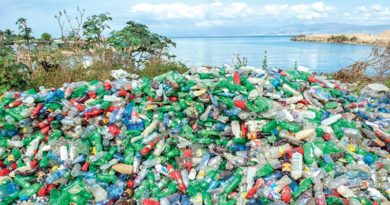21 Indian Cities Including Hyderabad, Chennai, Bengaluru & Kochi Will Run Out Of Water By 2030
India is facing the worst water crisis in its history, and 21 Indian cities will run out of groundwater by 2020, a new report from the NITI Aayog – a government think tank – said, highlighting the need for “urgent and improved” management of water resources.
Three rivers, four water bodies, five wetlands and six forests have completely dried in Chennai despite having better water resources and rains than any other metro cities, the report said.
- At least 21 Indian cities are moving towards zero ground water level by 2020
- About 40 per cent people in India may not have water to drink by 2030
- Water demand in India will reach 1.5 trillion cubic meters in 2030 while India’s current water supply is only 740 billion cubic meter
- The UN has ranked India 120th of 122 countries for water quality, About 70 per cent of the supply is contaminated
With nearly 600 million Indians facing high-to-extreme water stress – where more than 40 percent of the annually available surface water is used every year – and about 200,000 people dying every year due to inadequate access to safe water, the situation is likely to worsen as the demand for water will exceed the supply by 2050, said the ‘Composite Water Management Index’ (CWMI) report, released on 14 June.
Inadequate rainfall leading to drought and water scarcity has become a widespread phenomenon in India. Central Water Commission on May 10, 2019, issued a drought advisory – on water storage in dams dropping to a “critical” level. The advisory was Tamil Nadu and six other states including Maharashtra, Gujarat, Tamil Nadu, Karnataka, Andhra Pradesh and Telangana.
Groundwater in India depleted at 10-25 mm per year between 2002 and 2016. Average rainfall declined, from 1,050 mm in the kharif — summer cropping – season of 1970 to less than 1,000 mm in kharif 2015. Similarly, in the winter cropping, or rabi season, average rainfall declined, from approximately 150 mm in 1970 to about 100 mm in 2015. Dry days — days without rainfall — during the monsoons have increased, from approximately 40 percent to 45 percent in 2015.
If mitigation measures are not implemented, India faces a six percent loss in its gross domestic product (GDP) by 2050, the NITI Aayog report said. With nearly 70 percent of water contaminated, India ranks 120th of 122 countries in a global water quality index, the report noted.
Apart from water crisis, water pollution is another important concern. As per the latest World Bank report, 21 per cent of communicable diseases in India is related to unsafe water. In India, diarrhea alone causes more than 1,600 deaths daily.
As per the latest World Bank report, 21 percent of communicable diseases in India are related to unsafe water. In India, diarrhea alone causes more than 1,600 deaths daily.
In India, about 2,00,000 people die every year due to inadequate access to safe water, according to the ‘Composite Water Management Index’ (CWMI) report, released on June 14, 2018. The situation is expected to worsen as demand for water is going to increase after 2050.
The situation is really bad, to say the least. Water is the fundamental requirement for life to exist. If water is depleted, how can we expect our present generation as well as the future generation to exist and flourish. This calls for immediate policy level reforms by the government to be undertaken as a priority.




